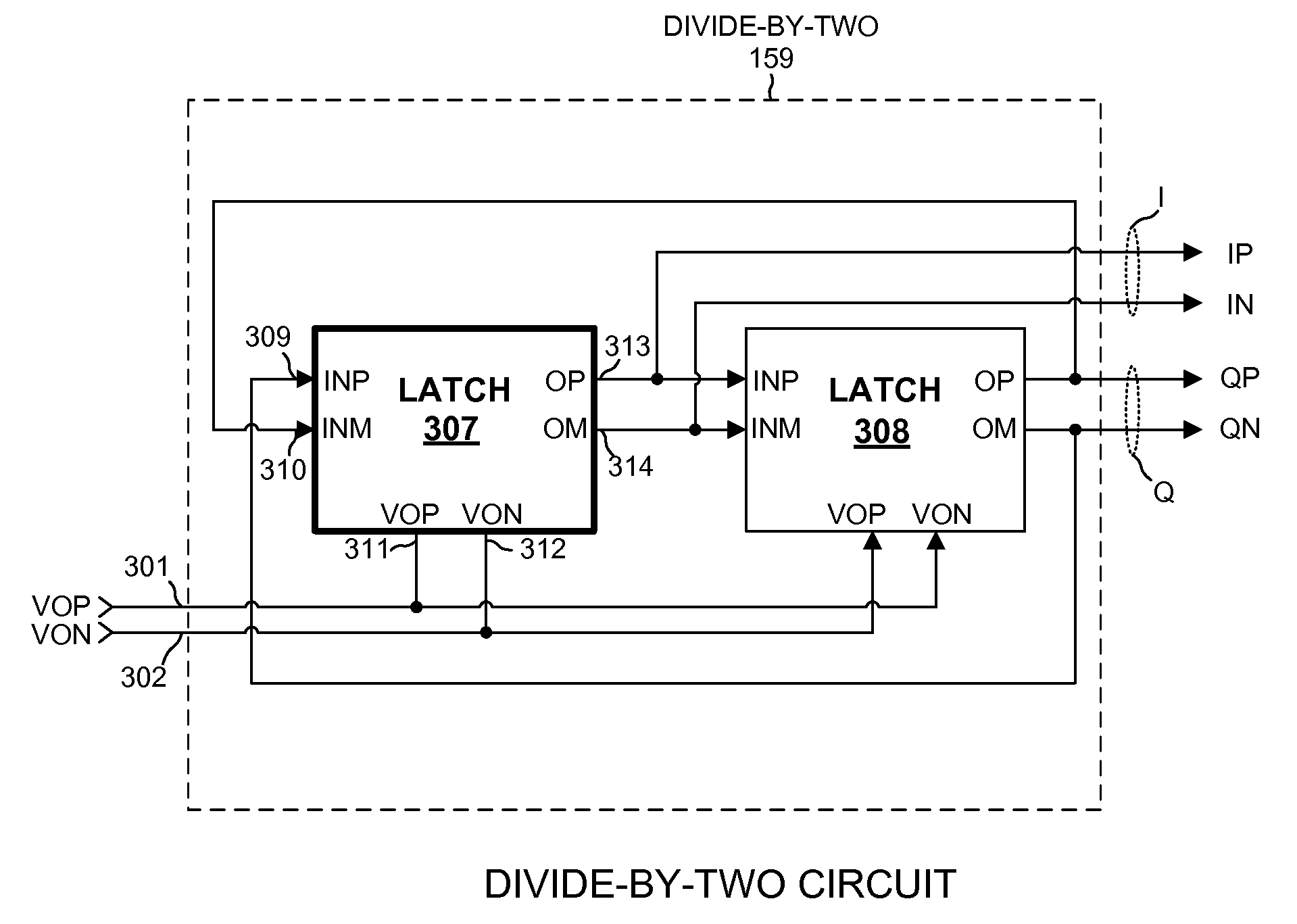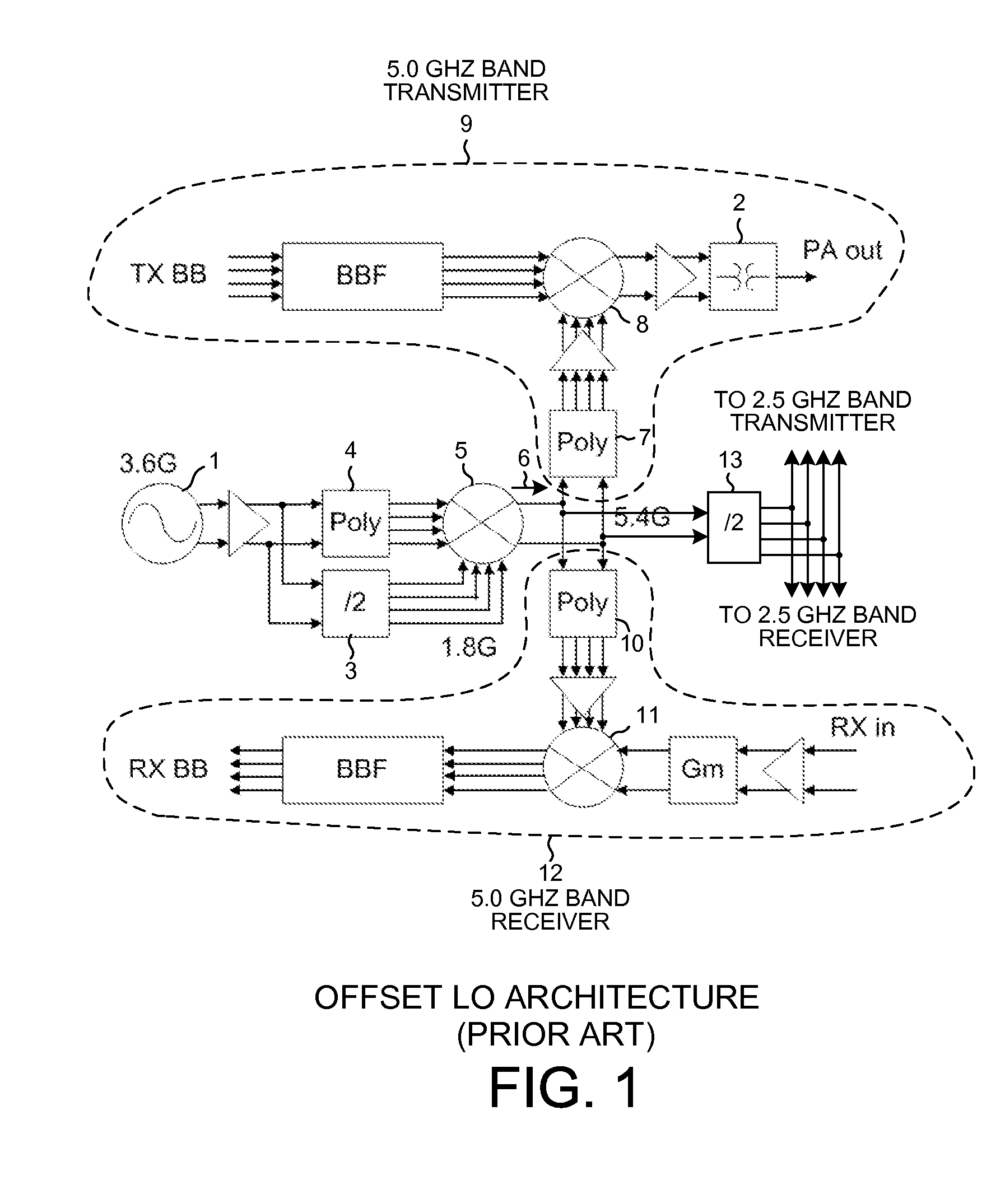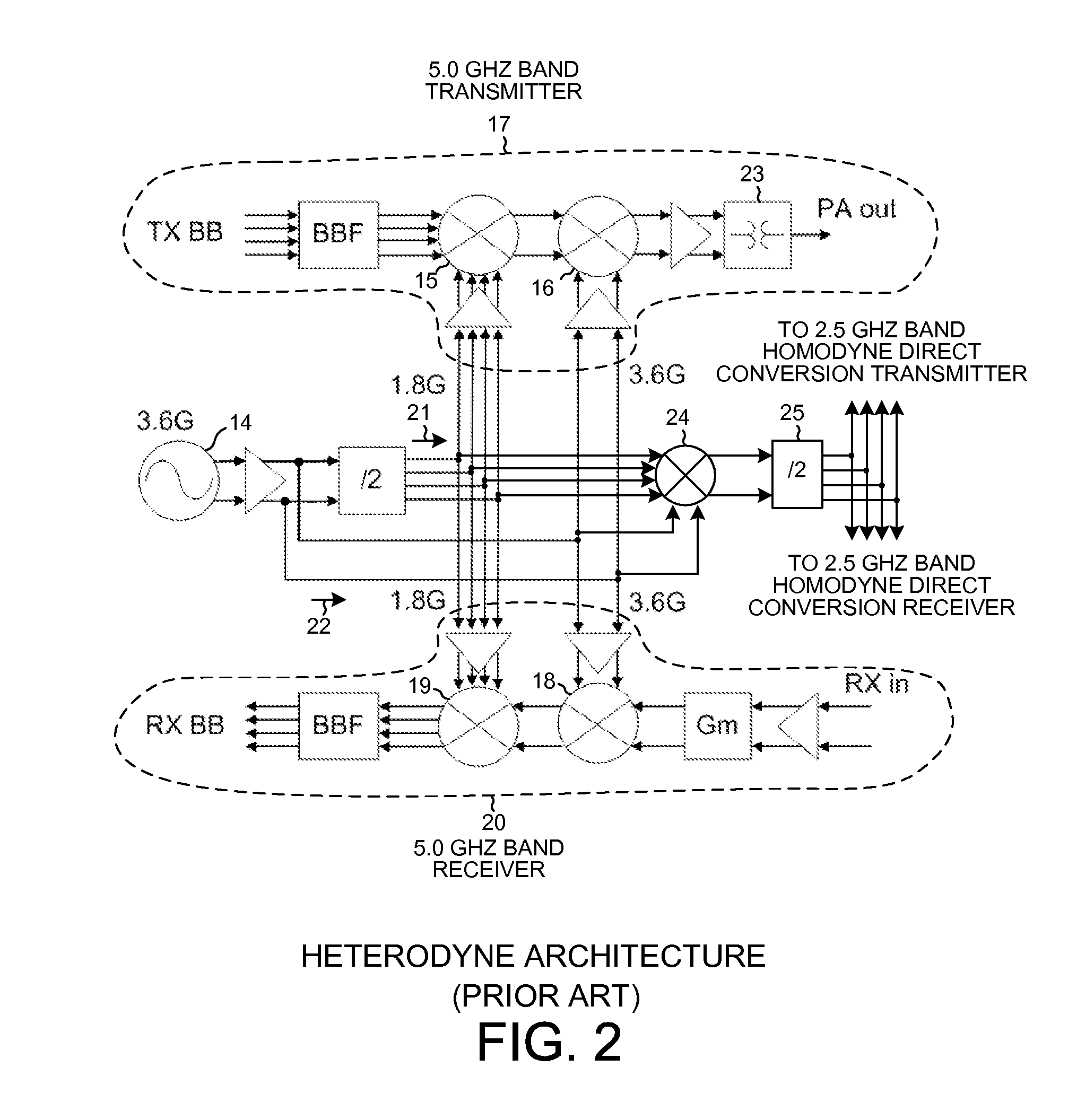Lo generation and distribution in a multi-band transceiver
a multi-band transceiver and local oscillator technology, applied in the direction of digital transmission, pulse automatic control, wireless commuication services, etc., can solve the problems of high cost of implementation, disturbance of vco, and low current consumption, and achieve low cost, small current consumption, and reasonable power consumption and reliability
- Summary
- Abstract
- Description
- Claims
- Application Information
AI Technical Summary
Benefits of technology
Problems solved by technology
Method used
Image
Examples
Embodiment Construction
[0037]FIG. 3 is a diagram of a multi-band IEEE802.11 mobile station device (STA) 100 transceiver embodied in a cellular telephone handset. The IEEE802.11 transceiver is called “multi-band” in that it can operate in accordance with the IEEE802.11a standard using a frequency band from 4.915 GHz to 5.825 GHz or it can operate in accordance with the IEEE802.11b / g standard using a frequency band from 2.412 GHz to 2.484 GHz. For simplification purposes, the lower band from 2.412 GHz to 2.484 GHz band is referred to hereinafter as the “first frequency band” and the higher band from 4.915 GHz to 5.825 GHz is referred to hereinafter as the “second frequency band”. IEEE802.11b / g is referred to as the “first standard”. IEEE802.11a is referred to as the “second standard”. Transceiver 100 includes (among other parts not illustrated) an antenna 101, an RF transceiver integrated circuit 102, and a digital baseband integrated circuit 103. RF transceiver integrated circuit 102 is called a “transceiv...
PUM
 Login to View More
Login to View More Abstract
Description
Claims
Application Information
 Login to View More
Login to View More - R&D
- Intellectual Property
- Life Sciences
- Materials
- Tech Scout
- Unparalleled Data Quality
- Higher Quality Content
- 60% Fewer Hallucinations
Browse by: Latest US Patents, China's latest patents, Technical Efficacy Thesaurus, Application Domain, Technology Topic, Popular Technical Reports.
© 2025 PatSnap. All rights reserved.Legal|Privacy policy|Modern Slavery Act Transparency Statement|Sitemap|About US| Contact US: help@patsnap.com



